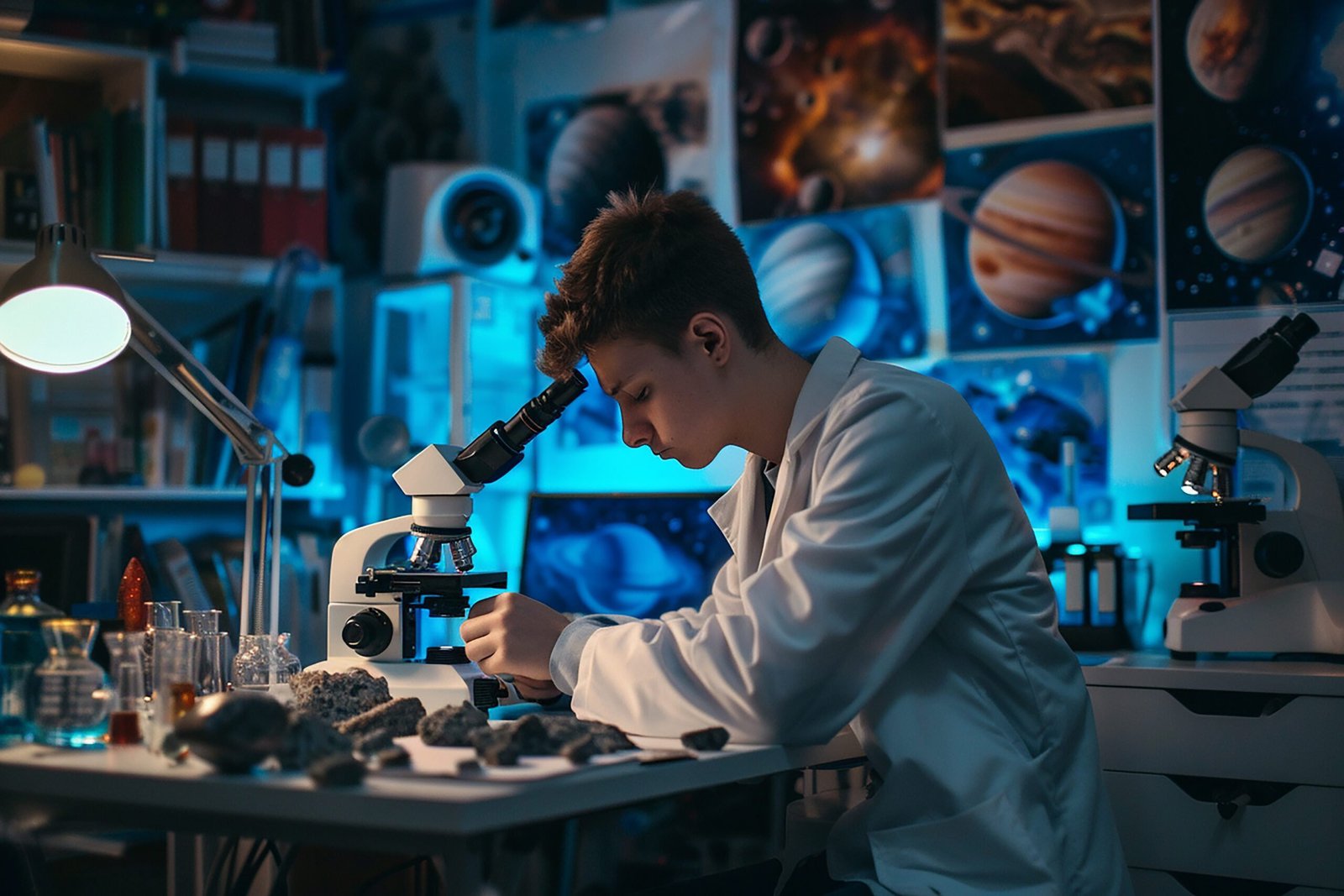Breakthroughs in Life Sciences: New Research Insights
Life Sciences Discoveries: Pioneering Research Insights

Introduction:
The field of life sciences is ever-evolving, brimming with groundbreaking research and discoveries that continuously reshape our understanding of living organisms. These advancements not only revolutionize medical and agricultural practices but also herald new possibilities for biotechnology and environmental conservation. This article delves into some of the most pioneering research insights in life sciences, highlighting key discoveries, their implications, and the future they promise.
Genomic Editing: A Leap Forward
Genomic editing, particularly through technologies like CRISPR-Cas9, has made substantial strides, enabling scientists to make precise alterations to DNA sequences. This revolutionary tool has opened new avenues in genetic research, allowing for the correction of genetic defects, the study of gene functions, and the development of genetically modified organisms (GMOs). CRISPR technology has been instrumental in numerous fields, from agriculture to medicine.
One of the most notable applications of CRISPR is in the realm of genetic diseases. By targeting specific genes associated with conditions such as cystic fibrosis, muscular dystrophy, and even certain types of cancer, researchers have been able to develop potential therapies that were previously unimaginable. Moreover, the ability to edit the genomes of plants has led to the creation of crops that are more resistant to pests, diseases, and environmental stresses, thereby boosting agricultural productivity and food security. Read more on GMO advancements.
Despite its transformative potential, genomic editing also raises ethical and safety concerns. The possibility of unintended genetic changes and the long-term impacts of these modifications are subjects of ongoing debate. As researchers continue to refine these techniques, it is crucial to establish robust ethical guidelines to ensure the responsible use of genomic editing technologies. Ethical considerations in genomic editing.
Microbiome Research: Unveiling Hidden Worlds
The human microbiome, the vast community of microorganisms residing within our bodies, has emerged as a critical area of study in life sciences. This complex ecosystem plays a fundamental role in health and disease, influencing everything from digestion to immunity and even mental health. Advances in sequencing technologies and bioinformatics have propelled microbiome research to the forefront of biomedical science. Microbiome and health.
Recent studies have uncovered the profound impact of gut microbiota on metabolic conditions like obesity and diabetes. Researchers have discovered that certain bacterial compositions in the gut can influence metabolic pathways, contributing to the development or prevention of these diseases. The link between gut microbiota and metabolic health. Additionally, the microbiome’s role in modulating the immune system has spurred interest in microbiome-based therapies for autoimmune diseases and allergies.
Moreover, the gut-brain axis, a bidirectional communication network between the gut and the brain, has garnered attention for its potential role in mental health. Emerging evidence suggests that gut bacteria can influence neurotransmitter production and behavior, opening new possibilities for treating psychiatric disorders through microbiome modulation. Gut-brain axis research.
Regenerative Medicine: Healing Through Innovation
Regenerative medicine, a field focused on repairing and replacing damaged tissues and organs, has seen remarkable advancements. Stem cell research, tissue engineering, and biomaterials are at the core of this innovative domain, offering hope for conditions that were once considered untreatable. Regenerative medicine advancements.
Stem cells, with their unique ability to differentiate into various cell types, have been pivotal in regenerative therapies. Clinical trials using stem cells are underway for a range of conditions, including spinal cord injuries, heart disease, and neurodegenerative disorders like Parkinson’s disease. Stem cell therapy in clinical trials. Moreover, breakthroughs in 3D bioprinting and tissue engineering are enabling the creation of functional tissues and organs, potentially addressing the shortage of donor organs for transplantation.
In addition to tissue regeneration, regenerative medicine also encompasses the development of biomaterials that can support and enhance the body’s natural healing processes. These materials, often designed to mimic the extracellular matrix, provide structural support and promote cell growth and differentiation. Innovations in biomaterials. As the field continues to evolve, the integration of regenerative medicine with personalized medicine holds promise for tailored therapeutic approaches.
Synthetic Biology: Engineering Life
Synthetic biology, an interdisciplinary field that combines biology, engineering, and computer science, aims to design and construct new biological parts and systems. This rapidly growing field has the potential to revolutionize industries ranging from healthcare to environmental management. Introduction to synthetic biology.
One of the most exciting applications of synthetic biology is the development of novel therapeutics. By engineering microorganisms to produce complex molecules, researchers are creating new drugs and vaccines. For example, synthetic biology techniques have been used to produce artemisinin, an antimalarial compound, and to develop new strategies for combating antibiotic-resistant bacteria. Synthetic biology in drug development.
Beyond healthcare, synthetic biology is also making strides in environmental sustainability. Scientists are engineering microbes to break down pollutants, produce biofuels, and sequester carbon dioxide, offering innovative solutions to global environmental challenges. Environmental applications of synthetic biology. As synthetic biology continues to advance, ethical and safety considerations will be essential to ensure responsible and beneficial applications.
Neuroscience: Mapping the Brain
The quest to understand the human brain, one of the most complex organs, has led to significant advancements in neuroscience. Cutting-edge technologies like functional MRI (fMRI), optogenetics, and neural mapping are providing unprecedented insights into brain function and disorders. Overview of neuroscience advancements.
Functional MRI has revolutionized the study of brain activity by allowing researchers to observe brain function in real time. This technology has been crucial in identifying brain regions involved in various cognitive processes and emotional responses. Functional MRI in neuroscience. Meanwhile, optogenetics, which involves the use of light to control neurons, has enabled precise manipulation of neural circuits, advancing our understanding of neural networks and their role in behavior.
Neural mapping projects, such as the Human Connectome Project, aim to create comprehensive maps of neural connections in the brain. These initiatives are shedding light on the intricate wiring of the brain and how it relates to cognition, behavior, and neurological disorders. Human Connectome Project. As neuroscience continues to unravel the mysteries of the brain, it holds the potential to transform the diagnosis and treatment of neurological and psychiatric conditions.
Conclusion:
The dynamic field of life sciences is driving forward with remarkable discoveries and innovations that are transforming our understanding of biology and medicine. From genomic editing and microbiome research to regenerative medicine and synthetic biology, each breakthrough brings us closer to addressing complex health challenges and improving our quality of life. As researchers and scientists push the boundaries of knowledge, it is imperative to balance the excitement of discovery with ethical considerations to ensure the responsible application of these advancements.
Key Takeaways:
- Genomic Editing: CRISPR-Cas9 technology is revolutionizing genetic research and therapy, with applications in medicine and agriculture.
- Microbiome Research: The human microbiome is crucial to health, influencing metabolism, immunity, and mental health.
- Regenerative Medicine: Advances in stem cell research and tissue engineering are opening new possibilities for treating previously untreatable conditions.
- Synthetic Biology: This field combines biology and engineering to create novel biological systems with applications in healthcare and environmental management.
- Neuroscience: Cutting-edge technologies are providing new insights into brain function and disorders, paving the way for advanced treatments.
FAQs:
1. What is CRISPR-Cas9 and why is it important?
CRISPR-Cas9 is a genome-editing tool that allows scientists to make precise modifications to DNA. It is important because it enables the correction of genetic defects, the study of gene functions, and the development of genetically modified organisms for various applications. Learn more about CRISPR-Cas9.
2. How does the microbiome influence human health?
The microbiome plays a critical role in digestion, immunity, and mental health by interacting with various bodily systems. Disruptions in the microbiome can contribute to diseases such as obesity, diabetes, and mental health disorders. Read more about the microbiome and health.
3. What are the potential benefits of stem cell therapy?
Stem cell therapy can potentially treat a wide range of conditions by regenerating damaged tissues and organs. Ongoing clinical trials are investigating its efficacy in treating spinal cord injuries, heart disease, and neurodegenerative disorders. Stem cell therapy applications.
4. What is synthetic biology and how is it applied?
Synthetic biology involves designing and constructing new biological parts and systems. It is applied in developing new drugs, producing biofuels, and creating environmentally friendly solutions to address global challenges. Introduction to synthetic biology.
5. How does functional MRI contribute to neuroscience?
Functional MRI (fMRI) allows researchers to observe brain activity in real time, helping identify brain regions involved in cognitive and emotional processes. It is crucial for studying brain function and disorders. Functional MRI in neuroscience.
6. What are the ethical concerns associated with genomic editing?
Concerns include the potential for unintended genetic changes and the long-term impacts of modifications. Ethical guidelines are necessary to ensure responsible and safe use of genomic editing technologies. Ethical considerations in genomic editing.
7. How is the gut-brain axis linked to mental health?
The gut-brain axis is a communication network between the gut and the brain. It influences neurotransmitter production and behavior, suggesting that modulating the microbiome could be a potential treatment for psychiatric disorders. Gut-brain axis research.
8. What are the challenges in regenerative medicine?
Challenges include ensuring the safety and efficacy of stem cell therapies, creating functional tissues and organs, and developing biomaterials that support natural healing processes. Challenges in regenerative medicine.
9. What environmental applications does synthetic biology have?
Synthetic biology can engineer microbes to break down pollutants, produce biofuels, and sequester carbon dioxide, offering sustainable solutions to environmental issues. Environmental applications of synthetic biology.
10. What is the Human Connectome Project?
The Human Connectome Project aims to create comprehensive maps of neural connections in the brain, enhancing our understanding of brain structure and function, and its relation to cognition and behavior. Human Connectome Project.








